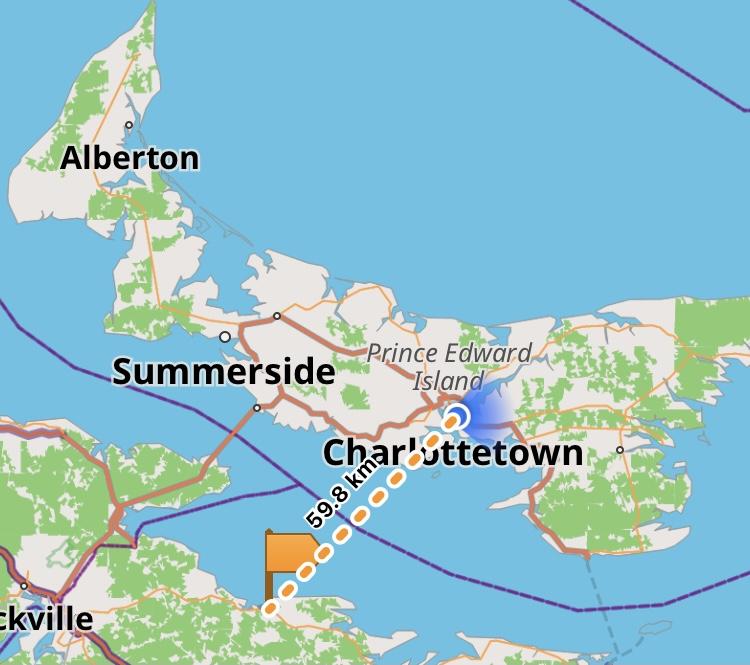I’m certain there are many estimable women in Pugwash for whom I’m an ideal suitor. And, let’s face it, who wouldn’t want to date a gal from Pugwash. The only strike against it is that it’s 2 hours away by bridge, 3½ hours by ferry.
Unless it’s Bumble that’s doing the calculating, in which case Pugwash is a mere 59 km from my front door. Because Bumble measures as the crow, or bee, flies.
Now Bumble provides many mechanisms for nudging you to possible consorts: you can filter by age, height, politics, or religion. You can filter out smokers. Or people who do (or do not) want children. But surely one of Bumble’s most basic levers is distance, especially in the time of COVID, when our Island is even more an island than usual.
So while I’d happily pop out for coffee with someone from Park Corner (46 km), or grab a drink with a friendly face from Cable Head East (49 km), Pugwash, for the moment and perhaps forever, falls outside my range.
And it’s not just Pugwash.
Let’s say I fancied a date from Miminegash (hours of fun just saying that euphonious wonder of a name alone): it’s 110 km away, as the bee flies. That becomes 136 km and 1¾ hours when you get driving directions, but it’s on the Island.
Alas, within the same 110 km radius you’ll also find Shediac (110 km), Springhill (98 km), Truro (97 km), and Antigonish (110 km). I can attest, from my casual Bumble swiping, that these communities are filled with perfectly wonderful possible assignations, but they are, literally, an ocean (and several prohibitory public health orders) away.
Now this isn’t a real romantic problem for me: I’m remarkably happy as I am, and have come to treat Bumble, as apparently many have, as much as a sort of curious hobby as anything else. But it’s an interesting computational problem.
How could Bumble do better?
In my case, an “in my Province only” checkbox, added to the distance slider, would work well. But that’s not going to solve the problem for people, say, on Bainbridge Island, WA who would happily look for a date up the road in Suquamish, WA (14 km), but aren’t interested in a ferry-mediated courtship with any of the millions of someones in Seattle, WA (13 km).
Ultimately, travel time is what we’re really interested in when looking at potential suitors.
While the algorithmic challenge might seem to be “calculate the travel distance between me and every Bumble prospect in the world,” it’s actually much simpler than that.
First, there’s never a situation where the “as the bee flies” distance is shorter than the travel distance; indeed, it is the shortest possible distance. So the challenge is the much more reasonable “calculate the travel distance between me and every Bumble prospect inside this radius.”
Second, the world is, relatively speaking, immutable, so as Bumble learns the travel time from Charlottetown to Pugwash, and Charlottetown to Miminegash, and Charlottetown to Shediac, it can build a model of the “reasonable travel” landscape, and save computing in real time on every go.
And, finally, there are only a limited number of places on Earth where this matters at all: islands far enough practically disconnected from mainland populations and, perhaps, people living on opposite sides of mountains.
And that’s why this is a problem unlikely to ever be addressed: the dozen or two single Prince Edward Islanders are far enough down the analytics report at Bumble HQ to be practically invisible.
So the lonely hearted of the Island will simply have to get used to swiping left on the forbidden fruit of the mainland.

 I am
I am
Add new comment